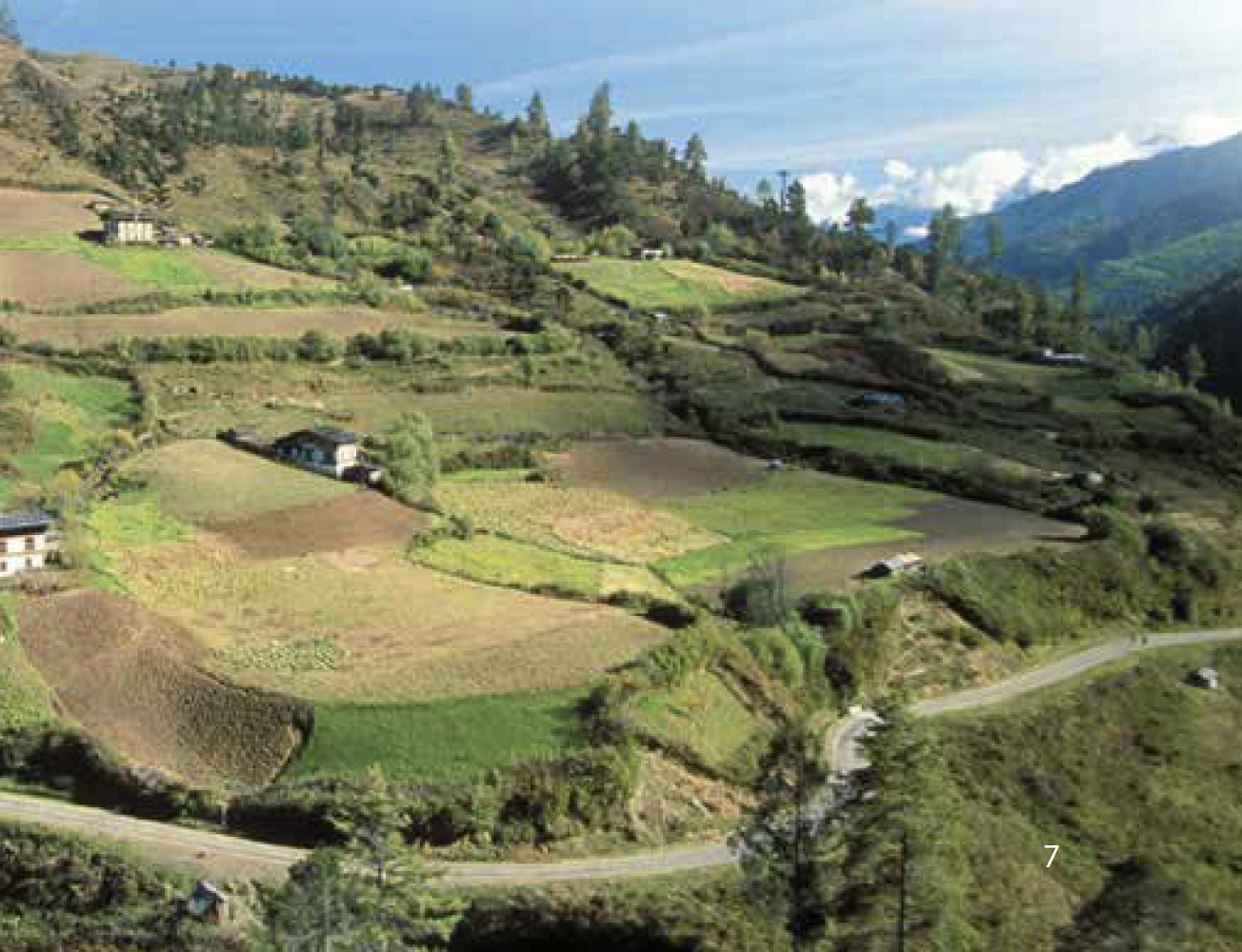Analysis of Forestry Policy, Acts and Rules of Bhutan to Mainstream Climate Change Adaptation
A fast, cost-effective but fully-featured website for your project or organisation Take advantage of tools and features that have already been built and tested. Focus your energy and budget on your content instead. A way to expand your audience/reach by taking advantage of existing networks Your content will be discoverable by our audience of over 120,000 unique annual visitors from the adaptation, development and environment communities. A way of extending the life of your research beyond your project/funding Vital knowledge can be lost altogether when projects come to an end. Instead, your content will live on for others to learn from and build upon.

Introduction
Bhutan is a small, mountainous country on the southern slopes of the eastern Himalayas. It has only about 738,000 inhabitants,1 but it is home to an astounding array of biodiversity. In fact, the country is in one of the world’s ten biodiversity “hotspots” (Myers 1988), situated at the convergence of the Paleartic and Indo-Malayan regions and containing tropical/subtropical, temperate and alpine species. The flora includes 579 species of wild orchids alone, at least 30 bamboo species, and more than 300 medicinal plants; the fauna includes 678 recorded species of birds and close to 200 species of mammals – among them the rare Royal Bengal Tiger.
Bhutan’s biodiversity is due, to a great extent, to its geography and rugged topography, with elevations ranging from less than 150 meters to more than 7,500 meters above sea level. At least as important is that Bhutan has protected large areas of pristine natural forest; around 72% of the land is under forest cover (Gilmour et al. 2009).
For Bhutan’s people, the forests provide food, timber, fibres and medicines; a wide range of ecosystem services (e.g. water regulation and purification, pollination, soil formation, nutrient recycling and climate regulation); and recreational, aesthetic, and spiritual benefits. From a global perspective,
Bhutan’s forests are also valuable carbon sinks, absorbing an estimated 6.3 million tonnes of carbon per year – more than four times the country’s emissions in 2000 (Kingdom of Bhutan 2011). Bhutan’s forests are also critical to its agriculture sector, which employs about 60% of the labour force and contributed nearly 17% of Bhutan’s GDP in 2010 (National Statistics Bureau 2007), even though just under 3% of Bhutan’s land is available for farming (Kingdom of Bhutan 2011). The forests are particularly important to Bhutan’s poor, most of whom live in rural areas. While only 1.7% of Bhutan’s urban residents lived in poverty as of 2007, and 0.2% in extreme poverty in rural areas, the rates were 30.9% and 8% respectively (National Statistics Bureau 2007).
This weADAPT article is an abridged version of the original text, which can be downloaded from the right-hand column. Please access the original text for more detail, research purposes, full references, or to quote text.
Case Study
The case study was conducted in Bumdeling Wildlife Sanctuary (BWS) in the eastern part of Bhutan. BWS is one of 10 protected areas in Bhutan. The sanctuary covers an area of 1,487 km2 . Of this 35% is coniferous forest; 34% is broad-leaf forest; 17% is covered by snow, ice and rocks; 10% is scrub; 2% is pasture; and 1% is agricultural land (NCD 2001). The elevation ranges from 150 to 6,450 metres above sea level. The area is characterized by a warm temperate climate in the south and an alpine climate in the mountainous region in the north. The sanctuary also encloses the catchments of two of Bhutan’s major rivers, the Kulong chhu and the Dangme chhu. Due to the varied altitude and climatic conditions, the area includes a wide array of ecological habitats, including sub-tropical, temperate broad-leaf and coniferous forests, alpine scrubs and meadows, and a permanent snowline in the north.
Methodology
The study focused on the community and household level through the application of participatory rural appraisal (PRA) tools and key informant household interviews. Since vulnerability is context-specific and often varies from village to village, the survey used representative sampling. Of 385 households, 157 were interviewed, or about 41% of the total households living within the BWS. Of the respondents, 69% were from illiterate farming communities, and the remaining 31% were monks, students or participants of non-formal education programmes.
Recommendations
Climate change is a cross-cutting issue affecting all sectors. Therefore, adaptation measures require an integrated approach with consideration of the agriculture, water resource management, soil and forest conservation, and disaster risk reduction sectors. They need to consider the diversification of a community’s livelihood strategies. It is also necessary to mainstream climate change into all development sectors. Based on the impact assessment and policy literature review, proposed adaptation strategies are as follows:
Proposed adaptation measures at the national level
This can be achieved through synchronization of policies and acts, conducting and utilizing research and education, identifying institutional linkages and promoting coordination, encouraging capacity-building and finance.
Proposed local level adaptation measures
This can be achieved by creating awareness on the causes and impacts of climate change, encouraging the promotion of small scale cottage industry, diversifying agricultural crops, focusing on sustainable land and soil management, creating the establishment of storage facilities, reducing house sizes in the community, initiating crop and livestock insurance schemes, starting local capacity-building programmes, and mainstreaming adaptation into local development plans.
Suggested citaion: Wangdi, T., P. Lhendup and N. Wangdi 2013. An Analysis of Forestry Policy, Acts and Rules of Bhutan to Mainstream Climate Change Adaptation. Regional Climate Change Adaptation Knowledge Platform for Asia, Partner Report Series No. 13. Stockholm Environment Institute, Bangkok.
(0) Comments
There is no content